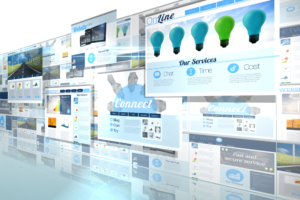
Seven things I learned about Digital Marketing from a Brick & Mortar Business
I went to the mall recently. Clearly retail business for the most part is struggling. There weren’t many people there, many of the stores were empty. Most things are done in the same old way it’s been done for years.
There was one exception. A technology store that sells phones, tablets, and computers. You know the one. It wasn’t empty. On the contrary, it was packed. I began to think of why this is happening for a Brick and Mortar store. As I started to list the reasons why, I could see that there is a huge parallel with online Digital Marketing. There are many lessons that you can learn from “the real world” to ramp up your Digital Marketing programs for success. Here are just seven of the lessons I learned.
Brick and Mortar Lessons
1. Traditional Marketing – Just because you have a store, you still must do other marketing. Advertising, public speaking, partnerships, presentations, press releases, sponsorships. This company may spend the most in the world on marketing on TV, Internet, Ads, etc.

2. Use of Space
– Most of the space is dedicated to helping people understand how to use the product (not shelf space for the inventory – why does the customer want to see all the inventory? They just want to know if you have one for them today!).
The product is shown used in several different ways. The customer can try it out for themselves. Is it boo big, too small, fast or slow, great technology, are there new things I didn’t think of? One computer was set up with spreadsheets, the next with a Piano keyboard and music software, the next one was set up for gaming with joysticks and killer graphic games on it. Same computer, 3 different uses targeted to the 3 different reasons someone might walk in to buy one.
3. Knowledgeable Team in Store Help – There are lots of knowledgeable people to help you, but they are not intrusive. They ask the question, “What are you trying to do with this product?” And then guide you to the one most suited for what you answered.
4. Buzz – Lots of people in there buzzing something must be happening This is literally where the term came from, the “Buzz of conversation”. The entire front of the store was glass, so when you walk by, you can see the activity. It draws you in.
5. Usability – Ready to buy, there are seamless transactions. No check-out line, purchase on the spot, from the person you just spoke with, they know who you are if you’ve been there and purchased before.
6. Customer Support Post Sale – They don’t forget about you after you’re a customer. They still care about you. They’ll investigate and repair your product there if you need it. Of course, you might decide to upgrade and buy more.
7. Something new – There are always new items in the store. I want to go back and see what’s new and how it works.
Digital Marketing Equivalents

1. Traditional Marketing – Just because you put up a website doesn’t mean the world will flock to your product/service. You must perform other marketing to drive traffic. Email marketing, advertising (print & digital), branding (your digital presence in everything you do), Blogs, white papers, public presentations, seminars/webinars, etc. Where do your customers “live” on the Internet? You must work to Market there. You must have technology to make Search Engines find your site. SEO is very important. Useful and changing content will get you ranked higher in the search engines and more likely someone will pick you from the 100’s (or 1,000’s) of links.
2. Use of Space – Does your web site just list your products? Don’t just list your product/service, show people what problem it solves for them. Show them how it’s used, show them the benefits (not just the features). Create Videos, use cases (show other people using it), customer success stories (other customers testifying that they got the benefit.), ROI calculators, cost savings, status. You may want to show that you have X number in stock or that you deliver in Y days.
3. Knowledgeable Team in Store Help – Have great and multiple contact capability. Real phone numbers, email, online information request forms, pop up Messaging “Can I help you”, request for quotation forms. If you don’t run a 24 by 7 shop, there are many alternatives to outsource the function, so it looks like it’s really your company and they then refer the warm lead to your sales team. Who doesn’t want t this?
4. Buzz – Placement in other digital forums. Reviews, Social Media discussion, followers. Get lots of Buzz online. Seed this with your own information to start. The buzz will happen. You invest more, you will get more. Ask questions, answer feedback, help customers.
5. Usability – Online ordering? How easy is the transaction? Does the user have to fill out 10 pages, do they have to copy and paste part numbers?
6. Customer Support Post Sale – Delight the customer after the sale. Support forums, FAQs, return and service program
7. Something new – Digital Marketing needs to always have something new. If you build a website, and don’t change anything for 2,3, or even 5 years, why would anyone come back? New content keeps targets coming back. It also has the secondary benefit of getting your material re-indexed and moved to the top of search engines. It must be relevant content, useful to someone (not just moving your logo).
It’s probably not a coincidence that this company had significantly more history as a Digital Marketing company than a Brick and Mortar store. They likely looked at all the activity that worked Digitally and asked themselves “How can we re-create this here in our store?”.
You can do this yourself in reverse. Think of how your customers would interact or want to, with a brick and mortar store, then put effort into making that happen in your Digital Marketing world. You’ll find that it will bring you more success than simply putting up a website and hope for the best. No doubt, some things will work, and some won’t. There’s nothing wrong with trying. Reduce the ones that don’t work, do more of the ones that provide results. Keep trying new things to please your target and current customers. You can never go wrong with that!






